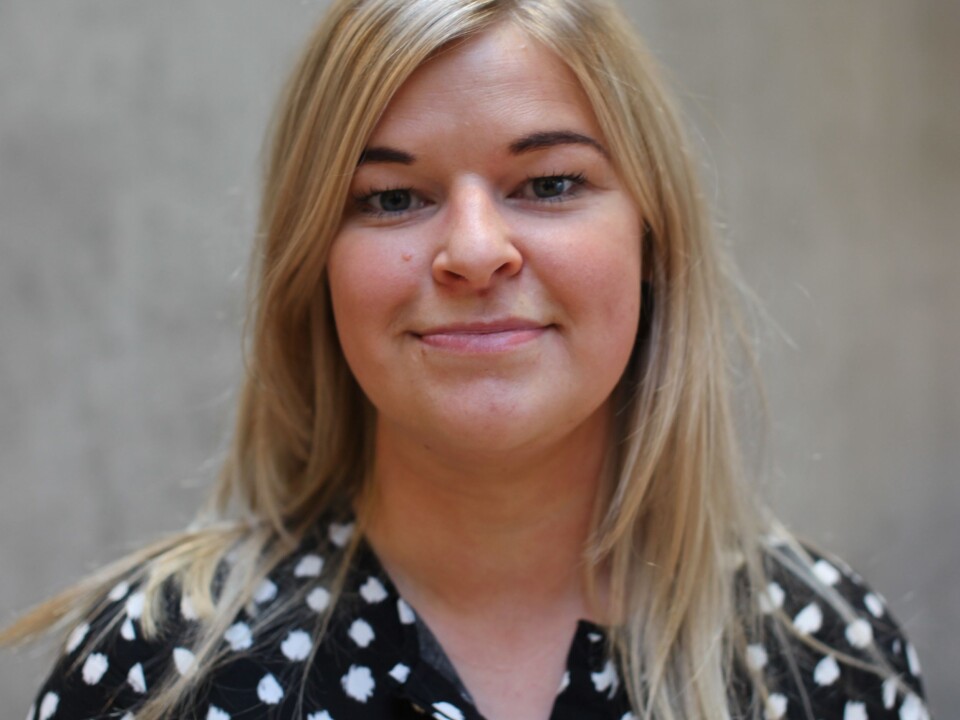
Eternal witch-hunt for the fat body
“The fat body carries a secret that has to be revealed at all costs; it is a living symptom that something has ‘gone wrong’,” says Camilla Bruun Eriksen. She has studied the representation of fat bodies in popular culture.

This article was originally published on Kilden - Information and news about gender research in Norway. Read the original article.
The year 2004 is perhaps a point of departure. This year, the first season of Biggest Loser was broadcasted in the U.S. The programme shows a group of overweight people compete with each other over who will have the biggest weight loss within a couple of months.
The following year, a Nordic version of the show premiered on TVNorge with participants from Norway, Sweden and Denmark. Since then, the concept has continued with new seasons of Biggest Loser, and a constant flow of other reality shows revolving around weight loss.
Neoliberal tendencies

“These stories have replaced shows that were also about health, but emphasised popular education. The participants were experts who gave advice on nutrition and fitness,” says Camilla Bruun Eriksen.
She is a PhD student at Department for the Study of Culture at the University of Southern Denmark in Odense. And she thinks the new lifestyle programmes have appeared as a result of the neoliberal tendencies that characterise our time.
“There’s a focus on turning the viewer into a consumer who is adaptable, productive, prepared to work, and thus also healthy. As a consumer, you are expected to initiate all the health projects that you learn about through these programmes, and you are personally responsible to see them through,” says Bruun Eriksen.
“The fact that the programmes often involve strong competitive elements is also a neoliberal phenomenon. It all revolves around the strongest candidate standing till the end whereas the others resign one by one.”
Freak show
In an article from the Journal of Gender Research (Tidsskrift for kjønnsforskning) 2/2017, Bruun Eriksen looks especially at a Danish TV programme called ‘My body, for horror and warning’ (Min krop til skræk og advarsel) from 2014. Here, twelve Danes display their naked, so-called destroyed bodies to show what consequences such practices as solarium tanning, plastic surgery, or too much consummation of food might have.
The third episode is about obesity, in which we meet twenty-three years old Maria who has ‘lost control’ of her own weight after many years of comfort eating as a result of being bullied.
“This programme belongs to a type of sub-genre in which the participants are not instructed on how to lose weight. Rather, the programme is all about getting under their skin to get a very personal and intimate insight into how they live and how they think of their own body,” says Bruun Eriksen.
“It is OK to stare at Maria. You’re free to let yourself entertain by her body. This is the premise upon which the entire programme rests.”
It is like being an audience at an old-fashioned freak show.
“The performance researcher André Stulman Dennett has stated that one type of body has still not left the freak scene, and this is the fat body. In earlier days, fat people were displayed in freak shows side by side extremely tall people or Siamese twins or what have you,” says Bruun Eriksen.
“But whereas these other bodies are today considered extraordinary in a way the owners of the bodies can’t help, fat people are still considered results of their own choices. It is self-inflicted. Therefore, it is still legitimate to display them, for instance in TV shows, for horror and warning.”
The body is a symptom
And since the fat body is self-inflicted, the carrier of this body owes us an explanation to why it has become the way it is.
“The fat body is always just a temporary condition; the goal is always to become slim. The fatness is a ‘symptom’ telling us that something has gone wrong. The fat body is therefore considered a secret,” Bruun Eriksen explains.
“We look at it and think, ‘did she have a bad childhood?’ Perhaps her parents were poor care persons? Did her husband leave her? Has she been victim of abuse? The fat body is like ripples at sea, we need to dive into it to see what is hidden in its depths.”
The paradox is that even if we find a story behind the fat body, the carrier of that body will still be the one responsible.
“We see this in Maria’s story in ‘My body, for horror and warning’. She was bullied as a child and consequently developed anxiety and depression,” says Bruun Eriksen.
“And you might think that when this comes to the surface, the message is about addressing bullying as a serious problem that we have to work to put an end to. But in the programme, it is not society at large, the structures, that needs changing, it is Maria herself.”
Eternal hunting season
At best, Maria may hope to receive the viewers’ absolution as she stands up and confesses her sins, i.e. fatness, through participation in the programme.
“Fat people are ‘committing a crime’ against a very strong moral command that has developed over the past decades. You have to be healthy or at least strive towards health. And health has become synonymous with being slim,” says Bruun Eriksen.
“The fat body therefore appears as a visible violation of the health command. It symbolises everything that is wrong – you don’t work hard enough and you’re not willing to change.”
Therefore, it is always season for hunting the fat body.
“There’s a prevalent belief that we can always shape our body in the way we want it. And the idea is that the body will always remain slim unless we make it otherwise,” she emphasises.
“This idea is probably wrong, since it doesn’t take into account the complexity of how bodies are formed – genes, diseases, economy, milieu, education… Instead, all the attention is on biomedical causal explanations in which everything is up to you and your own choices.”
Happiness is to be slim
Being fat is not only a violation of the command to be healthy, if we are to believe the story we are served in the reality programmes about losing weight. As long as you’re fat, you can’t be truly happy. Happiness lies in the future, which is a motivation factor for weight loss.
And part of this happiness is being sexually attractive.
“We see this in Maria’s story, how she is not taken seriously as an object of sexual attraction because she is fat. She has met a man online, and the climax of the programme lies in whether she will manage to lose the sufficient amount of weight before her first date with him.”
Camilla Bruun Eriksen emphasises that although the demands for women’s bodies have always been more strict than those for men’s bodies, men do not escape the moral command of being slim either.
“The fat male body is easily perceived as feminine. It becomes soft, and has perhaps breasts. Similarly, the fat female body might lose the much sought-after female waist, or you can’t entirely see where the breasts end and the stomach begins,” she says.
“In other words, if your body becomes too fat, it is as if it becomes degendered. In the weight loss programmes, we see how bodies are sexualised once they lose weight. If you lose weight, you become more sexually attractive as a reward, and the next step is that you may hope to experience romance and love.”
Translated by: Cathinka Dahl Hambro
































